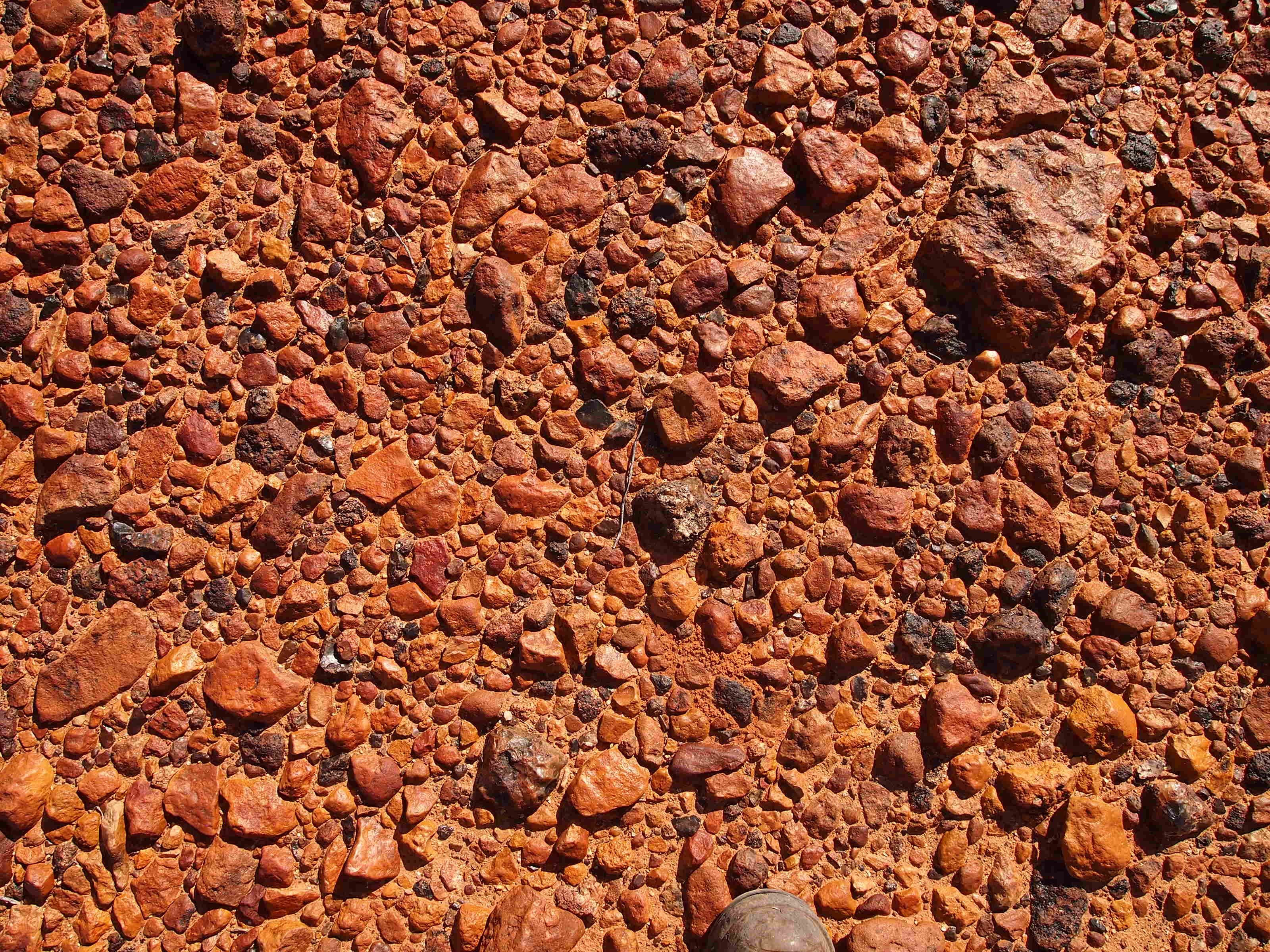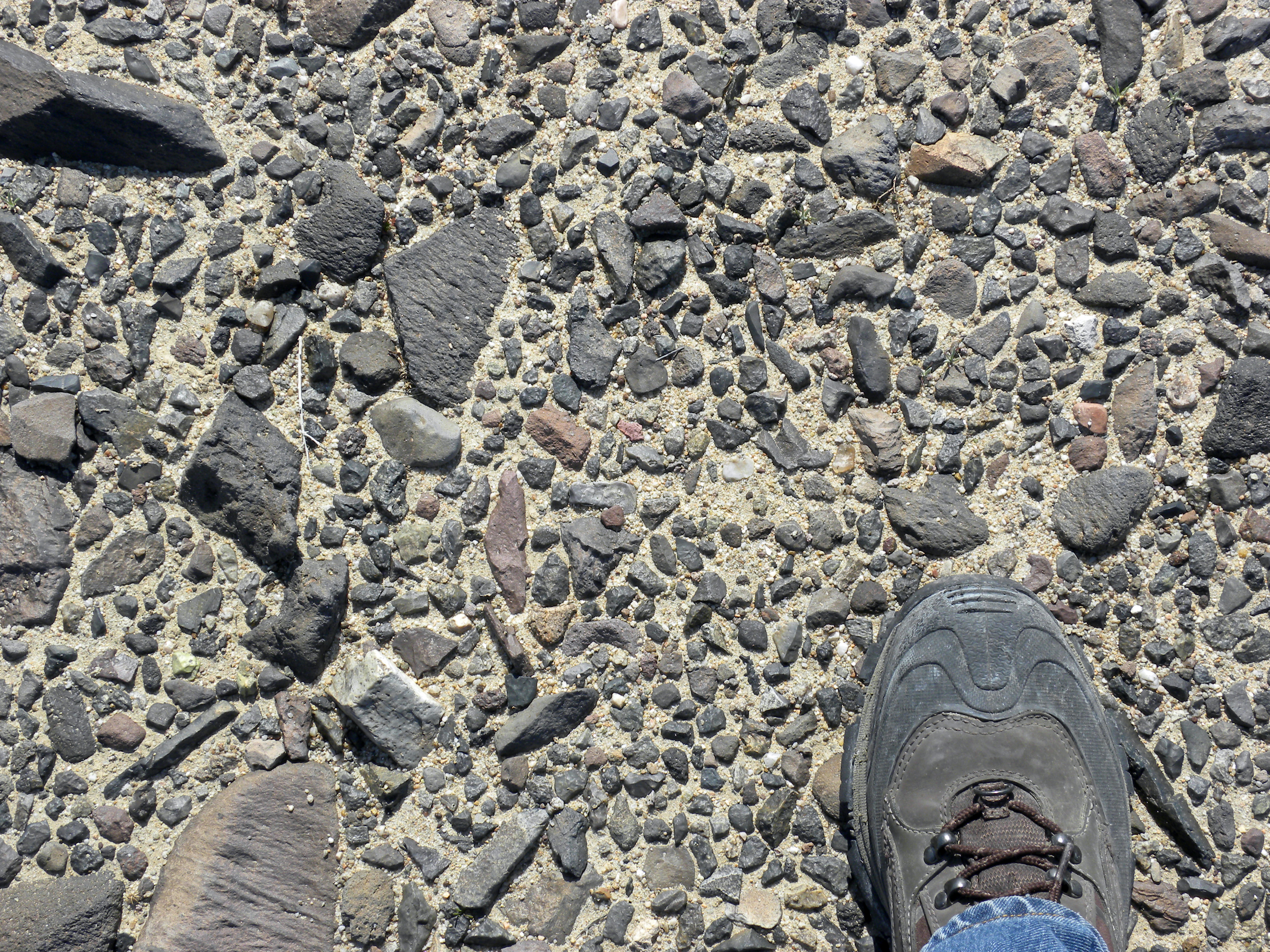Gibber Rise on:
[Wikipedia]
[Google]
[Amazon]

 A desert pavement, also called reg (in western Sahara), serir (in eastern Sahara), gibber (in Australia), or saï (in central Asia) is a desert surface covered with closely packed, interlocking angular or rounded Rock (geology), rock fragments of pebble and cobble (geology), cobble size. They typically top alluvial fans. Desert varnish collects on the exposed surface rocks over time.
Geologists debate the mechanics of pavement formation and their age.
A desert pavement, also called reg (in western Sahara), serir (in eastern Sahara), gibber (in Australia), or saï (in central Asia) is a desert surface covered with closely packed, interlocking angular or rounded Rock (geology), rock fragments of pebble and cobble (geology), cobble size. They typically top alluvial fans. Desert varnish collects on the exposed surface rocks over time.
Geologists debate the mechanics of pavement formation and their age.
 Desert pavement surfaces are often coated with desert varnish, a dark brown, sometimes shiny coating that contains clay minerals. In the US a famous example can be found on Newspaper Rock in southeastern Utah. Desert varnish is a thin coating (patina) of clays, iron, and manganese on the surface of sun-baked boulders. Micro-organisms may also play a role in their formation. Desert varnish is also prevalent in the Mojave desert and Great Basin geomorphic province.
Desert pavement surfaces are often coated with desert varnish, a dark brown, sometimes shiny coating that contains clay minerals. In the US a famous example can be found on Newspaper Rock in southeastern Utah. Desert varnish is a thin coating (patina) of clays, iron, and manganese on the surface of sun-baked boulders. Micro-organisms may also play a role in their formation. Desert varnish is also prevalent in the Mojave desert and Great Basin geomorphic province.
Desert Processes Working Group
Aeolian landforms Deserts Sediments zh:岩漠

Formation
Several theories have been proposed for the formation of desert pavements. A common theory suggests that they form through the gradual removal of sand, dust and other fine-grained material by the wind and intermittent rain, leaving the larger fragments behind. The larger fragments are shaken into place through the forces of rain, running water, wind, gravity, creep, thermal expansion and contraction, wetting and drying, frost heaving, animal traffic, and the Earth's constant microseismic vibrations. The removal of small particles by wind does not continue indefinitely, because once the pavement forms, it acts as a barrier to resist further erosion. The small particles collect underneath the pavement surface, forming a Vesicular texture, vesicular A soil horizon (designated "Av"). A second theory supposes that desert pavements form from the shrink/swell properties of the clay underneath the pavement; when precipitation is absorbed by clay it causes it to expand, and when it dries it cracks along planes of weakness. Over time, this geomorphology, geomorphic action transports small pebbles to the surface, where they stay through lack of precipitation that would otherwise destroy the pavement by transport of the clasts or excessive vegetative growth. A newer theory suggests that desert pavements form through depositions of windblown dust atop preexisting rocks. The dust then settles beneath the rocks, forming a layer of soil, while the rocks at the top crack and begin to merge into desert pavement. In 1995, researchers conducted a study in the Mojave Desert using Helium dating, helium-3 dating where they determined the rocks to be of older age than the soil beneath, leading to the conclusion of "stone pavements [being] born at the surface." Desert pavement surfaces are often coated with desert varnish, a dark brown, sometimes shiny coating that contains clay minerals. In the US a famous example can be found on Newspaper Rock in southeastern Utah. Desert varnish is a thin coating (patina) of clays, iron, and manganese on the surface of sun-baked boulders. Micro-organisms may also play a role in their formation. Desert varnish is also prevalent in the Mojave desert and Great Basin geomorphic province.
Desert pavement surfaces are often coated with desert varnish, a dark brown, sometimes shiny coating that contains clay minerals. In the US a famous example can be found on Newspaper Rock in southeastern Utah. Desert varnish is a thin coating (patina) of clays, iron, and manganese on the surface of sun-baked boulders. Micro-organisms may also play a role in their formation. Desert varnish is also prevalent in the Mojave desert and Great Basin geomorphic province.
Local names
Stony deserts may be known by different names according to the region. Examples include: Gibbers: Covering extensive areas in Australia such as parts of the Tirari-Sturt stony desert ecoregion are desert pavements called ''Gibber Plains'' after the pebbles or ''gibbers.'' ''Gibber'' is also used to describe ecological communities, such as ''Gibber Chenopod Shrublands'' or ''Gibber Transition Shrublands''. In North Africa, a vast stony desert plain is known as ''reg''. This is in contrast with ''Erg (landform), erg'', which refers to a sandy desert area.Jean Dresch et al., ''Géographie des régions arides'', Presses universitaires de France, Paris, 1982.See also
* * * , a mechanism of surface rock formation * * * *Notes
References
* Al-Qudah, K.A. 2003. ''The influence of long-term landscape stability on flood hydrology and geomorphic evolution of valley floor in the northeastern Badin of Jordan''. Doctoral thesis, University of Nevada, Reno. * Anderson, K.C. 1999. ''Processes of vesicular horizon development and desert pavement formation on basalt flows of the Cima Volcanic Field and alluvial fans of the Avawatz Mountains Piedmont, Mojave Desert, California''. Doctoral thesis, University of California, Riverside. * Goudie, A.S. 2008. ''The history and nature of wind erosion in deserts''. Annual Review of Earth and Planetary Sciences 36:97-119. * Grotzinger, et al. 2007. ''Understanding Earth'', fifth edition. Freeman and Company. 458–460. * Haff, P.K. and Werner, B.T. 1996. D''ynamical processes on desert pavements and the healing of surficial disturbance''. Quaternary Research 45(1):38-46. * Meadows, D.G., Young, M.H. and McDonald, E.V. 2006. ''Estimating the fine soil fraction of desert pavements using ground penetrating radar''. Vadose Zone Journal 5(2):720-730. * Qu Jianjun, Huang Ning, Dong Guangrong and Zhang Weimin. 2001. ''The role and significance of the Gobi desert pavement in controlling sand movement on the cliff top near the Dunhuang Magao Grottoes''. Journal of Arid Environments 48(3):357-371. * Rieman, H.M. 1979. ''Deflation armor (desert pavement)''. The Lapidary Journal 33(7):1648-1650. * Williams, S.H. and Zimbelman, J.R. 1994. ''Desert pavement evolution: An example of the role of sheetflood''. The Journal of Geology 102(2):243-248.External links
{{Commons categoryDesert Processes Working Group
Aeolian landforms Deserts Sediments zh:岩漠